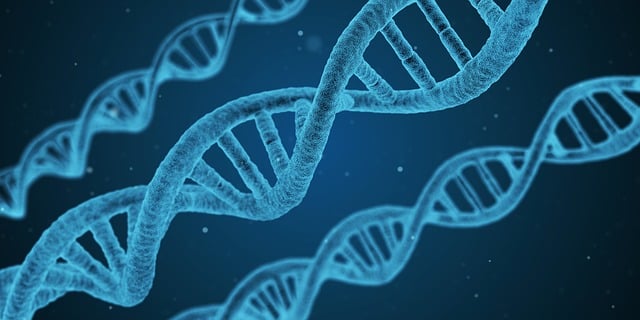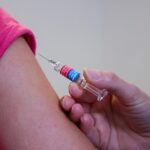Sexually transmitted infections (STIs) are infections that are passed from one person to another through sexual contact. They can affect anyone who is sexually active, regardless of age, gender, or sexual orientation. While some STIs show no symptoms, others can lead to serious long-term health issues if left untreated.
In this blog post, we will discuss the most common STIs, their symptoms, how they’re transmitted, and most importantly, how to prevent and treat them.
What Are Sexually Transmitted Infections (STIs)?
Sexually transmitted infections, also known as sexually transmitted diseases (STDs), are infections that are transmitted through vaginal, anal, or oral sex. Some STIs are bacterial, others viral, and some can be parasitic. While many STIs are manageable or curable with the right treatment, others may cause lifelong complications.
Common Types of STIs
1. Chlamydia
-
What it is A bacterial infection that often shows no symptoms, but can cause severe complications if untreated, including infertility.
-
Symptoms Painful urination, abnormal discharge, pelvic pain, or pain during sex.
-
Treatment Antibiotics prescribed by a healthcare provider.
2. Gonorrhea
-
What it is Another bacterial STI that can affect both men and women, often asymptomatic in its early stages.
-
Symptoms Painful urination, abnormal discharge, and pelvic or testicular pain.
-
Treatment Antibiotics; however, antibiotic resistance is becoming an issue with gonorrhea.
3. Human Immunodeficiency Virus (HIV)
-
What it is A viral infection that attacks the immune system, specifically the CD4 cells, making the body vulnerable to infections and certain cancers.
-
Symptoms Early symptoms include flu-like illness, fatigue, and swollen lymph nodes. If left untreated, HIV can progress to AIDS (Acquired Immunodeficiency Syndrome).
-
Treatment Antiretroviral therapy (ART) can help manage the condition and reduce viral load.
4. Herpes Simplex Virus (HSV)
-
What it is A viral infection causing cold sores or genital sores.
-
Symptoms Painful blisters or sores on the genital area, anus, or mouth. The virus remains dormant in the body, with recurrent outbreaks triggered by stress, illness, or other factors.
-
Treatment Antiviral medications can reduce outbreaks and transmission risk.
5. Human Papillomavirus (HPV)
-
What it is A viral infection with many strains, some of which can cause genital warts or lead to cancers, including cervical cancer.
-
Symptoms Most people do not show symptoms, but some may develop genital warts. High-risk strains of HPV can cause cancer.
-
Treatment There’s no cure for the virus, but there are vaccines to prevent some types of HPV and treatments for warts or pre-cancerous changes.
6. Syphilis
-
What it is A bacterial infection that progresses through stages if left untreated.
-
Symptoms A painless sore at the site of infection, followed by a rash, and in later stages, potentially serious complications affecting the heart, brain, and other organs.
-
Treatment Antibiotics, typically penicillin, can cure syphilis if treated early.
7. Trichomoniasis
-
What it is A parasitic infection caused by the parasite Trichomonas vaginalis.
-
Symptoms In women, vaginal discharge, odor, irritation, and discomfort during sex. Men may have mild symptoms, including urethral discharge or irritation.
-
Treatment Prescription medications, usually metronidazole or tinidazole, effectively treat the infection.
How Are STIs Transmitted?
STIs are most commonly transmitted through sexual contact, but some can also be transmitted through non-sexual means. Here are the common modes of transmission
-
Vaginal, Anal, or Oral Sex Many STIs are transmitted through the exchange of bodily fluids such as semen, vaginal fluids, or blood.
-
Skin-to-Skin Contact Some STIs, like herpes or HPV, can be transmitted through direct skin contact.
-
From Mother to Child Some STIs can be transmitted from mother to child during childbirth or pregnancy.
-
Needles or Blood Products Some viral infections, like HIV or Hepatitis B, can be transmitted via shared needles or blood transfusions.
STI Prevention How to Protect Yourself
Protecting yourself from STIs is an essential part of sexual health. Here are some effective prevention strategies
1. Use Condoms Consistently and Correctly
-
Why Condoms are one of the most effective methods of preventing STIs, especially those that are transmitted through bodily fluids (e.g., chlamydia, gonorrhea, HIV).
-
Tip Both male and female condoms provide a barrier against infections. Ensure the condom is put on before any sexual activity begins.
2. Get Vaccinated
-
Why Vaccines are available for some STIs, like HPV and Hepatitis B, and can greatly reduce the risk of infection.
-
Tip Talk to your healthcare provider about getting vaccinated, especially before becoming sexually active.
3. Limit Sexual Partners
-
Why The fewer sexual partners you have, the lower your risk of contracting STIs. Monogamous relationships with an uninfected partner are the safest.
-
Tip Open communication about sexual health with your partner(s) is crucial for mutual protection.
4. Regular STI Testing
-
Why Regular testing helps detect STIs early, even if there are no symptoms.
-
Tip Anyone sexually active should be tested regularly, especially if having multiple partners or engaging in unprotected sex.
5. Avoid Sharing Personal Items
-
Why STIs can sometimes be transmitted through contaminated personal items like razors or needles.
-
Tip Never share items that come into contact with bodily fluids.
Symptoms How to Recognize an STI
While many STIs show no symptoms, others may cause noticeable signs. Here are some common symptoms of an STI
-
Painful urination
-
Unusual discharge from the penis or vagina
-
Pain during sex
-
Genital sores or blisters
-
Rashes on the genital area or elsewhere on the body
-
Flu-like symptoms such as fever, body aches, or swollen lymph nodes
If you experience any of these symptoms, it’s important to seek medical attention immediately. Early detection and treatment are crucial for managing STIs and preventing further complications.
Treatment of STIs What You Need to Know
Treatment for STIs varies depending on the type of infection
-
Bacterial STIs (e.g., chlamydia, gonorrhea, syphilis) can be treated with antibiotics.
-
Viral STIs (e.g., HIV, herpes, HPV) have no cure, but antiviral medications can help manage symptoms and reduce transmission.
-
Parasitic infections (e.g., trichomoniasis) can be treated with prescription medications.
Sexually transmitted infections are common, but many can be prevented with the right precautions. Protecting yourself and your partner(s) through safe sex practices, regular testing, and open communication is essential for maintaining sexual health. If you suspect you have an STI or are concerned about your sexual health, consult a healthcare provider for advice and testing.
Remember, knowledge is power when it comes to sexual health. Educating yourself and taking preventive measures can help you live a healthy and fulfilling sexual life.


